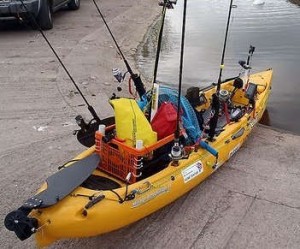“Fishing Lore” vs. Hard Science
All too often, as taxpaying fishermen, we’re guilty — yeah, me, too — of griping that we’re not getting enough fisheries-improving bang for our bucks. But if those improvements are made, and we fail to use them — or, worse, fail to even make any effort to find out where and what they are — then we’re being both hypocritical and willfully ignorant.
A lot of our fishing-related taxes and fees go into hard scientific research. A lot of sharp, hardworking academics have been toiling for a lot of years at trying to make us smarter fishermen. And, for the most part, we’ve been ignoring them. If we need to know whether, say, there is a correlation between lure size and color and the average size of fish caught in a given body of water, we’ll log into some forum and let a bunch of people share their (often extensive) anecdotal experiences. Absolutely nothing wrong with that whatsoever. You might actually learn something. I certainly have.
The problem is that we often use either the plausibility of a statement to determine its validity — or, worse, its degree of acceptance by others. We “old pros” often blithely pass along our hard-won “knowledge”, and sometimes — sometimes, mind you — we’re dead wrong. Let me give you an example.
You’ve seen it done a thousand times by fishing-TV-show hosts. They lip a largemouth, hold it up and announce that it is a male or a female (usually based on a cursory visual examination of one or more of its gross physiological characteristics — girth, gut shape, yada-yada-yada). I used to do this. Maybe your buddies do this. Maybe you do it.
“Mmmm. Nice little male.”
“Ooooo-EEE! Lookit THIS ol’ gal! She’s jist BULGIN’ with babies!”
If so, please stop. You are merely perpetuating yet another useless piece of “wisdom-of-the-crowd” fishing “lore” that is absolute 100% unadulterated horse manure.
FACT: Nobody — not even a biologist — can accurately tell the sex of a given bass at a glance!
There are only three relatively simple and practical field methods of determining the sex of a largemouth bass, and two of them, depending upon the season, may provide about the same accuracy as flipping a coin:
1. Determining the presence or absence of a swollen, reddish genital papilla — and while this method can be up to 89% accurate in the spring, it is only 48% accurate in the fall;
2. Examining the shape of the scaleless area surrounding the urogenital opening — and this method is only 53% accurate at any time;
3. Measuring the depth and angle of probe penetration into the urogenital opening — and this method only offers a relatively high probability of accuracy (90-98%) if you do both, and with the proper instrument.
So the next time some “old pro” just holds up a bass, looks at it and says, “This one’s a male!” or “This one’s a female!”, you should tell them precisely where they need to stick it — and exactly how deep.
Source: Practical Field Methods of Sexing Largemouth Bass, G.W. Benz and R.P. Jacobs, The Progressive Fish-Culturist (1986;48:221-225)


